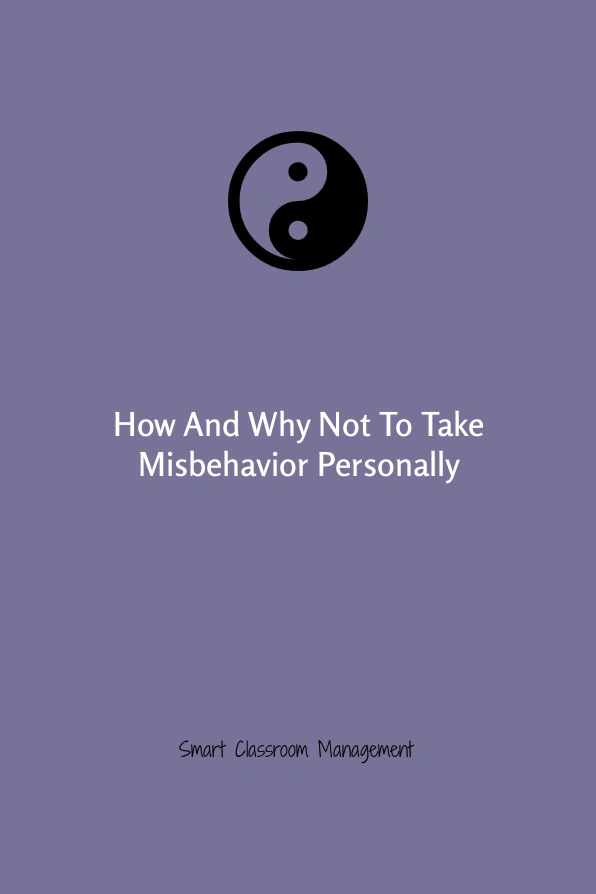Many years ago, before I started SCM, a district administrator who knew of my fascination with classroom management came to see me.
She wanted me to visit a teacher at a nearby school.
She didn’t tell me why, only that I would enjoy it. So I called the teacher up and he agreed to let me observe his class as long as I did the same for him.
A few days later I was sitting in the back of his classroom. What I saw over the next couple hours upended what I’d previously believed about classroom management.
The first thing that jumped out at me, however, was that his students were happy. Lots of smiles, open body language, and an eagerness to learn. Beyond that, they were impeccably behaved.
I jumped in and participated in the activities and wandered around during independent work.
The students were focused on their projects and assignments but relaxed. They were open, communicative, and excited to share with me the work they were doing.
But what most surprised me was their teacher.
When we first met before his students arrived he was socially awkward. He dressed older than his age, a tie and vest, neat and dapper. His voice was soft and monotone. His personality was mild-mannered, obsequious, and unusually formal.
He did smile, however, and was friendly. But there wasn’t much warmth or expression. He reminded me of a courtly concierge at a five-star hotel.
When his students began filing in I expected his personality to change. I assumed he’d be more outgoing. But he wasn’t. He was the same, if not stiffer. He appeared to speak and gesture less than he did when it was just the two of us.
The juxtaposition of his muted personality and his students’ spirited enthusiasm was hard to reconcile. But after spending an entire morning with his class, I began to understand his secret.
There were five things in particular that stood out and that he relied on to make such a powerful impact on his class. It was clear he was narrowly focused on just these five, which allowed him to stand head and shoulders above the average teacher.
As you read through them, noticed how well they match SCM principles.
1. The environment.
Absolutely impeccable. His room was like nothing I’d seen before or since. The Louvre before the doors open for the day would come closest. I take pride in my own room’s neat appearance, but his was on another planet.
It was not only clean and organized, with cabinets and drawers labeled and color-coded, but it was aesthetically pleasing. Beautifully minimalistic, which enabled students to focus and be immersed in an environment that screamed “excellence is expected.”
2. The routines.
He mentioned to me that he taught his everyday routines to perfection and explained in detail the importance of taking pride in how well they’re performed. His students completed them fast and were zealous to impress him.
There were a lot of routines—more than I’d seen before in another classroom—which freed him to observe and verify they were done correctly. They also formed the backbone of his effort to bring purpose, motivation, and responsibility to every student.
3. The rules.
Remarkable because of their simplicity, his rules and consequences were nearly identical to mine. (The same set we recommend here at SCM.)
Two students broke rules while I was there, calling out to him without raising their hand.
He followed through calmly. His personality didn’t change whatsoever while going through the steps he had clearly modeled for his students. He wasn’t concerned or stressed when it happened. He enforced and moved on.
4. The lessons.
He didn’t have great lessons in the performative sense. He didn’t seem to have the ability to engage, tell stories, or inspire students from the front of the room, which for me is something I’ve always enjoyed and relied on to capture and hold attention.
He showed me, however, that there is another way.
He replaced performance with activities and projects students love. He got them moving and building and creating through his innovative ideas. His lessons were centered on how to successfully achieve the goals he gave them. He spoke briefly and then got them working.
5. The observation.
He watched his students like an osprey perched above her chicks. He did this not only because he could protect them from disruption by enforcing his classroom management plan, but because he would learn what they needed from him to get better.
He stepped in to help more than I recommend and at times did some of the work his students were able to do. He couldn’t seem to help himself.
However, he provided a lot of clear and technical detail. In other words, he didn’t drown them in platitudes and empty praise. Rather, he made it worth their while by giving help that fed their momentum.
The Takeaway
As discussed in The Happy Teacher Habits, I still believe in teaching compelling lessons from the front of the classroom.
In the book, I detail how I plan such lessons in a short amount of time, grab student attention, and draw them into a flow experience similar to how kids become enraptured while playing video games.
Done right, it’s a cheat-code to instilling a love of learning.
But this one visit proved to me that a few of the other principles we recommend here at SCM, when lifted to an unusual level of excellence, can overcome the advantages of delivering compelling lessons.
It showed me that when you seek perfection in just a small number of areas, the overall impact can be so great that it all but eliminates the need for teacher charisma and personality.
Add this ability to connect and build influential relationships, however, work on giving better, more compelling lessons, and you can see why and how SCM is so effective.
PS – Please follow our new Instagram page, where we’ll be posting fresh content several times per week.
If you haven’t done so already, please join us. It’s free! Click here and begin receiving classroom management articles like this one in your email box every week.
















+ There are no comments
Add yours